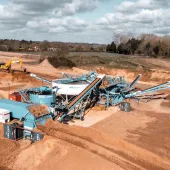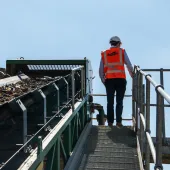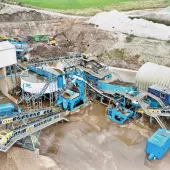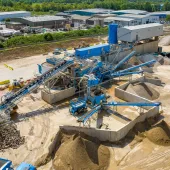Gaining Ground at Gill Mill
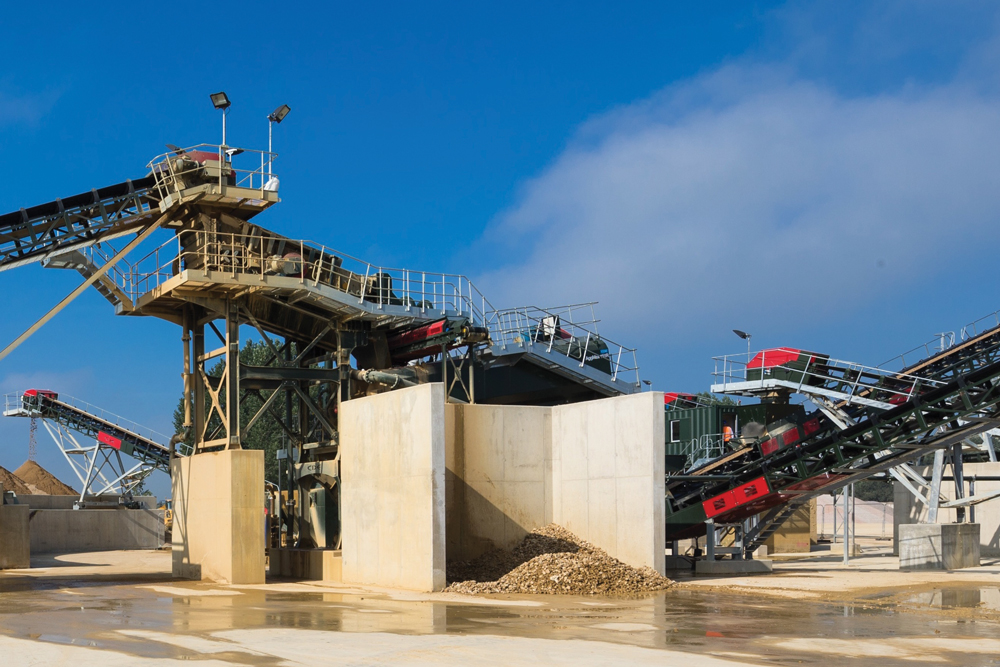
First published in the April 2016 issue of Quarry Management
Smiths Bletchington boost production capacity at Oxfordshire quarry with new CDE wash plant
When it comes maintaining integrity and purpose in a world of commerce that is forever changing and evolving, Smiths Bletchington’s values and ethics are undoubtedly of the old school. Part of this tradition is the constant appraisal of opportunities with investment in new plant and technology occurring at the point when it is considered most favourable to do so.
Recently, just such a situation presented itself after approval was granted to extend the company’s existing operations at Gill Mill Quarry, a few miles from Oxford. This followed a three-year campaign to gain planning permission for mineral extraction from a further 90ha of land adjacent to the present quarry site, thereby extending Gill Mill’s life by an estimated 20–25 years.
However, as quarries operations manager John Bell noted, a further quarter of a century is a long time and it was felt that the existing processing facilities would be unlikely to last the course. Indeed, for a variety of reasons, most of which could be put down to age and the demand for maintenance and servicing of an outdated design, the existing set-up was already rarely achieving its nominal 200 tonnes/h capacity.
Several alternative options were considered including total refurbishment, but ultimately it was decided to take down and strip out the old machinery and renew the plant completely. And having already worked with CDE on previous smaller projects, both John Bell and Smith Bletchington were more than happy to contract this task to the Northern Ireland-based company with full confidence that their requirements would be met on this much larger project.
Construction commenced in early 2015, and to ensure that production could continue once the old plant had been removed to make room for the new, CDE sourced a smaller unit which was installed temporarily while the state-of-the-art replacement was erected. Once the groundworks at the 3ha processing plant site had been completed, the new plant was quickly up and running and immediately achieved its designed maximum throughput of 250 tonnes/h (peaks of 270 tonnes/h are possible when utilizing virgin material rather than recycling 10mm and 6mm through the plant’s vertical-shaft impact crusher for increased sand yield).
A substantial boost in productivity was not the only benefit sought by Smiths during the design process; extra flexibility in producing aggregates to particular specifications, especially sand, was also required, as was greater consistency in operation and energy efficiency. All these aims were duly met by CDE, who used their experience and knowledge to bring together the most suitable elements available to achieve these goals.
The inclusion of a vertical-shaft impactor working alongside a hydrocyclone unit to produce two grades of sand, which may or may not be recombined after separation, depending upon market demand, was not possible with the old plant but has now added a further string to Smith Bletchington’s bow when customers are looking for more refined grades of material.
Moreover, energy savings are being achieved through the use of CDE’s patented screenbox design. The use of bolts in the screenbox construction, rather than welding, along with cast cross-members and a tri-wall design has allowed for a 30% saving in weight, which, in turn, translates into a 30% saving in the energy required to vibrate it.
In addition to the lighter box, the use of Rosta suspension mounts ensures that less vibration is transmitted to the structure, reducing stress upon the installation as a whole and keeping the kinetic energy of vibration where it is intended – within the screen itself. Through careful selection and matching of components, CDE say cost savings will be made, not just through a smaller energy bill, but by much reduced expenditure on servicing throughout the years ahead.
The virgin material extracted by Smiths is a reasonably consistent mixture of sand and larger gravels typical of the alluvial deposits found in the Thames Valley. Even though pre-screening extracts the majority of the sand from the mix, a large capacity log-washer is still required to remove any remaining grains adhering to the shingle. An AggMax 151R deals with this task and the sand yielded by the process joins that from the pre-screen section before both streams enter the hydrocyclone unit.
The cleaned aggregate ejected from the log-washer can be separated into three different grades or diverted to the crusher, as required. Processed stone emerging from the crusher is reunited with the main flow of gravel before entering the final screen box, thus avoiding the need for it to pass through the log-washer for a second time, where it would cause additional wear and interfere with the cleaning action.
The log-washer itself is fitted with variable-speed drive so that it can be started under load, obviating the need for it to be cleaned out each time it is shut down. Starting and stopping the plant is a fully automated sequential procedure controlled from a cabin situated at the finished-product end of the line; there is no bank of switches or controls, just a simple monitor which displays the current status of the plant along with any potential problems that may be developing, thereby allowing them to be pinpointed and attended to immediately, thus maximizing the reliability of performance.
Having declared themselves extremely pleased with the installation and operation of their new plant at Gill Mill Quarry, John Bell said: ‘Should we require another plant at any of our other sites, CDE will certainly be our first call.’

